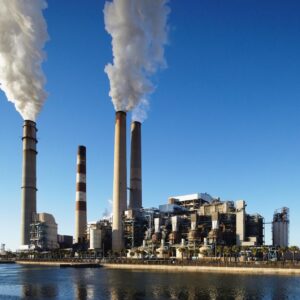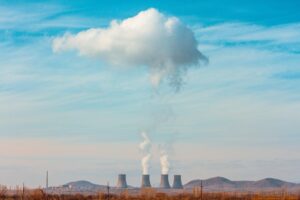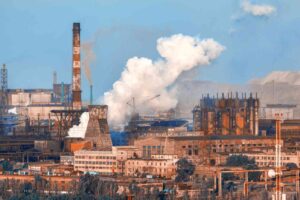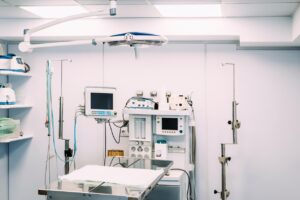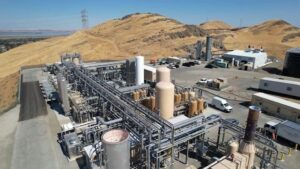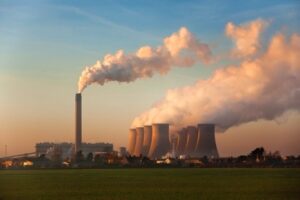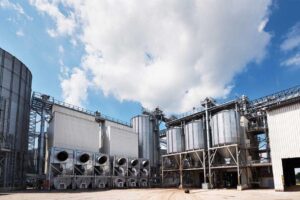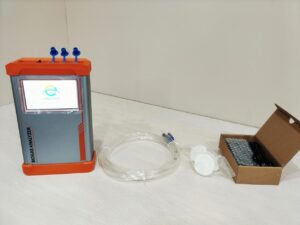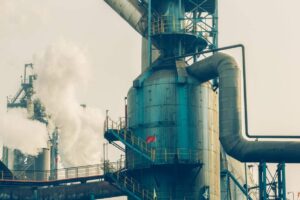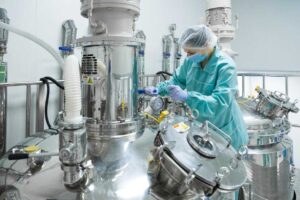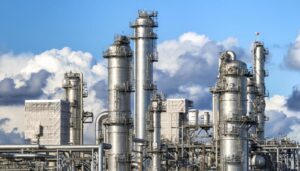Embark on a journey into the realm of Continuous Gas Analyzers, where real-time monitoring transforms industries.
Learn about their diverse types, appreciate their multifold advantages, grasp their vital applications, and master the art of selecting the perfect analyzer for your needs.
Types of Continuous Gas Analyzers!

Venture into the vast world of Continuous Gas Analyzers. Uncover five different types: Infrared Gas Analyzer, Paramagnetic Gas Analyzer, Electrochemical Gas Analyzer, TDLAS Laser Gas analyzer,Photoacoustic Gas Analyzer, and Zirconia Gas Analyzer . Each has unique attributes and applications.
● Infrared Gas Analyzers
Infrared Gas Analyzers play a critical role in emissions monitoring. By leveraging the principle of absorption spectroscopy, detection of gases like CO2 and hydrocarbons becomes possible. Each gas has a unique infrared absorption pattern, like a fingerprint.
Now, imagine a scenario where a power plant must monitor CO2 levels. The Infrared Gas Analyzer would be their best friend. Its sensitivity to changes in CO2 concentrations can range from 0 to 100%, providing valuable data for emissions control.
Temperature and pressure may influence the analyzer’s accuracy. Therefore, the operating temperature typically ranges between -5 and 50°C, while the pressure should remain near atmospheric.
● Paramagnetic Gas Analyzers
Paramagnetic Gas Analyzers, conversely, focus on oxygen. Oxygen’s paramagnetic properties allow these analyzers to provide high accuracy and fast response times. They often feature in combustion control systems, where oxygen levels are crucial.
Think of a scenario in a hospital operating room. Oxygen concentration is vital for patient safety. A Paramagnetic Gas Analyzer ensures oxygen stays within a safe range, typically around 21%.
Since these analyzers are sensitive to magnetic field changes, they must operate away from magnetic disturbances. The typical operating temperature is around 0 to 50°C for accurate readings.
● Electrochemical Gas Analyzers
Electrochemical Gas Analyzers detect various gases through an oxidation-reduction process. They can measure CO, NOx, SO2, and other gases, making them valuable in environmental monitoring.
Consider an urban area struggling with pollution. Electrochemical Gas Analyzers aid in identifying pollution sources by analyzing gas concentrations. They operate ideally at temperatures from -5 to 45°C for best performance.
● Photoacoustic Gas Analyzers
Photoacoustic Gas Analyzers work on the photoacoustic effect principle. They are capable of detecting a variety of gases, including methane, nitrous oxide, and water vapor. They often serve in greenhouse gas monitoring applications.
Imagine a research facility studying greenhouse gases. Photoacoustic Gas Analyzers provide accurate measurements and quick response times. Operating temperatures are typically between 0 and 50°C for optimal readings.
● Zirconia Gas Analyzers
Finally, Zirconia Gas Analyzers measure oxygen concentrations. They rely on zirconia’s ability to conduct oxygen ions at high temperatures. These analyzers are popular in combustion control processes.
Visualize a large factory where combustion efficiency is paramount. A Zirconia Gas Analyzer helps maintain optimal oxygen levels, ensuring efficient combustion. The operating temperature for these analyzers often exceeds 700°C due to the nature of zirconia.
| Criteria | Infrared | Paramagnetic | Electrochemical | Photoacoustic | Zirconia |
| Detected Gases | CO,CO2, Hydrocarbons | Oxygen | CO, NOx, SO2 | Methane, Nitrous Oxide, Water Vapor | Oxygen |
| Applications | Emissions Monitoring | Combustion Control, Medical | Environmental Monitoring | Greenhouse Gas Monitoring | Combustion Control |
| Operating Temperature (°C) | -5 to 50 | 0 to 50 | -5 to 45 | 0 to 50 | >700 |
| Sensitivity | 0-100% (CO2) | High (O2) | Various Gases | Various Gases | Oxygen Ions |
| Principle | Absorption Spectroscopy | Paramagnetism | Oxidation-Reduction | Photoacoustic Effect | Zirconia Ion Conductivity |
| Influences | Temperature, Pressure | Magnetic Fields | Temperature | Temperature | High Temperatures |
Advantages of Continuous Gas Analyzers!
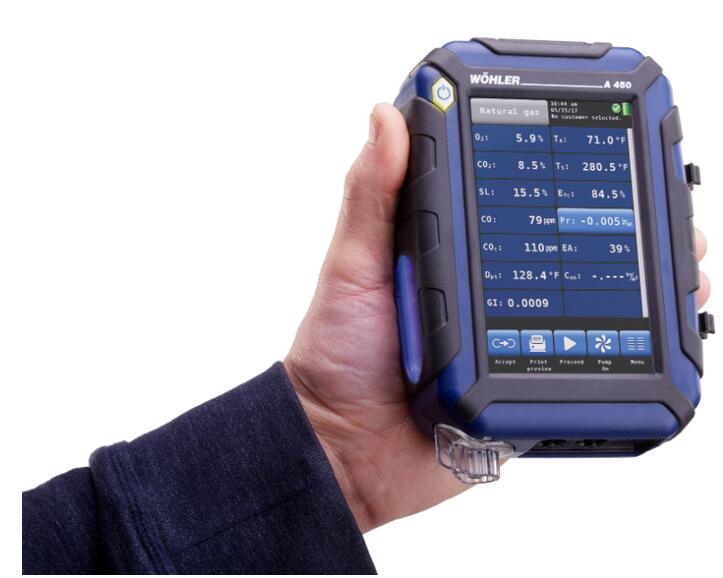
Continuous Gas Analyzers bring numerous advantages. From real-time data collection to enhanced process control, they increase safety, ensure compliance, and reduce downtime.
1. Real-Time Data Collection
Real-time data collection stands as a prime advantage. Analyzers, such as infrared or electrochemical, can provide data instantly. You get the required information in seconds, not minutes. That’s a game-changer in many industries.
Continuous monitoring equips you with the power to catch anomalies quickly. Immediate detection leads to fast action. Instant reactions prevent potential gas leaks or hazardous conditions. The value of such capability cannot be overstated.
Consider a scenario in a petrochemical plant. Complex processes require strict gas concentration levels. Monitoring these levels continuously ensures the processes run smoothly. Even a slight deviation in concentration can disrupt operations.
Data can be integrated into broader systems. Integration into Industrial Control Systems (ICS) allows for seamless operations. So, you get enhanced control over the entire production process.
2. Improved Safety And Hazard Prevention
Safety stands as a paramount concern in many industries. Industries dealing with volatile gases or hazardous substances prioritize safety above all.
These analyzers constantly monitor the environment. Monitoring leads to early detection of potential hazards. Early detection leads to immediate action. You get to prevent disasters before they occur.
For instance, in a chemical plant, gas leaks can be deadly. Continuous monitoring helps in identifying these leaks early. Quick action can then be taken to rectify the situation. Lives can be saved, and property damage can be avoided.
3. Enhanced Process Control
Process control is another area where Continuous Gas Analyzers shine. Precise control over gas concentrations is essential in many industries. From petrochemicals to power plants, precise control ensures optimal operations.
Continuous monitoring provides real-time feedback on gas concentrations. The feedback helps in adjusting processes on the fly. You get to maintain optimal conditions throughout the process.
This level of control can greatly improve product quality. It can also enhance efficiency and reduce waste.
4. Regulatory Compliance Assurance
Regulatory compliance is a major concern in many industries. Governments worldwide enforce strict rules on gas emissions. Non-compliance can lead to hefty fines or even shutdowns.
These gas analyzers help in ensuring compliance. They provide constant monitoring and accurate data. The data can be used to demonstrate compliance during audits.
In addition, the data can help in identifying areas of improvement. You get to proactively address potential compliance issues. So, these analyzers not only help in avoiding penalties but also in improving operations.
5. Reduced Downtime And Maintenance
They also contribute to reducing downtime and maintenance. Traditional periodic checks can lead to significant downtime. Any maintenance required would also disrupt operations.
But with continuous monitoring, you get to catch issues early. Early detection can lead to preventive maintenance. So, the equipment can be serviced before it fails. This approach can greatly reduce downtime.
Moreover, these analyzers are generally robust and require minimal maintenance. They are designed for industrial environments and can operate effectively for long periods. Thus, they contribute to overall operational efficiency.
Key Applications of Continuous Gas Analyzers!
Peeling back the layers of continuous gas analyzer usage, several core applications come out. There’s emission monitoring, combustion optimization, process control, ambient air monitoring, leak detection, and industrial hygiene monitoring.
● Emission Monitoring
Gas monitoring tools have irreplaceable roles in emission surveillance. On a mission to combat pollution, companies must control harmful discharges. Gas analyzers are their loyal allies.
Real-time analysis is crucial for understanding the levels of gases like CO2, CO, NO, and SO2. Each data point collected is a step towards an eco-friendly world. Gas analyzers play a pivotal role in reducing emissions and keeping the environment safe.
● Combustion Optimization
In power plants and industries, combustion optimization is a daily task. The efficiency of burning fuels largely depends on oxygen concentration. Too high, and fuel is wasted.
Too low and harmful gases like CO form. Analyzers measure oxygen levels, ensuring optimal combustion. This not only minimizes fuel consumption but also decreases emission of harmful gases.
● Process Control
Maintaining optimum conditions in a chemical process is a balancing act. To ensure the highest yield and product quality, precise measurements are critical. Continuous gas analyzers provide real-time data, allowing for instant corrective action.
Analyzing gases like H2, CO2, or O2, they help maintain process efficiency. They are the unseen heroes in industries from oil refining to fermentation.
● Ambient Air Monitoring
Public health and environmental safety demand constant ambient air monitoring. Pollution levels, especially in urban areas, can spike without warning.
To monitor them, you need to measure the concentration of gases like O3, CO, NO2, and SO2 in the air. Gas analyzers provide this data. Each reading is a step towards cleaner, safer air for everyone.
● Leak Detection
Undetected gas leaks can cause environmental damage and pose safety risks. Early detection is critical. Gas analyzers can help.
They sniff out leaks by measuring concentrations of gases like methane and CO2. By continuously monitoring, they allow early corrective action, preventing potential disasters.
● Industrial Hygiene Monitoring
In an industrial setting, worker safety is paramount. Exposure to toxic gases can have severe health effects. Monitoring air quality in the workplace is crucial.
With real-time data from gas analyzers, companies can maintain safe levels of gases like CO, NO2, and SO2. Its one way these devices contribute to creating a healthier workplace environment.
| Application | Importance | Key Gases Monitored | Benefits |
| Emission Monitoring | Pollution control | CO2, CO, NO, SO2 | Reducing emissions |
| Combustion Optimization | Fuel efficiency | Oxygen | Decreases harmful gas emissions, Minimizes fuel consumption |
| Process Control | Process efficiency | H2, CO2, O2,CH4,CO | Instant corrective action |
| Ambient Air Monitoring | Public health | O3, CO, NO2, SO2 | Cleaner, safer air |
| Leak Detection | Safety, Environmental protection | Methane, CO2,H2S | Early detection, Prevention of disasters |
| Industrial Hygiene Monitoring | Worker safety | CO, NO2, SO2,H2 | Healthier workplace environment |
How to Select the Right Continuous Gas Analyzer?
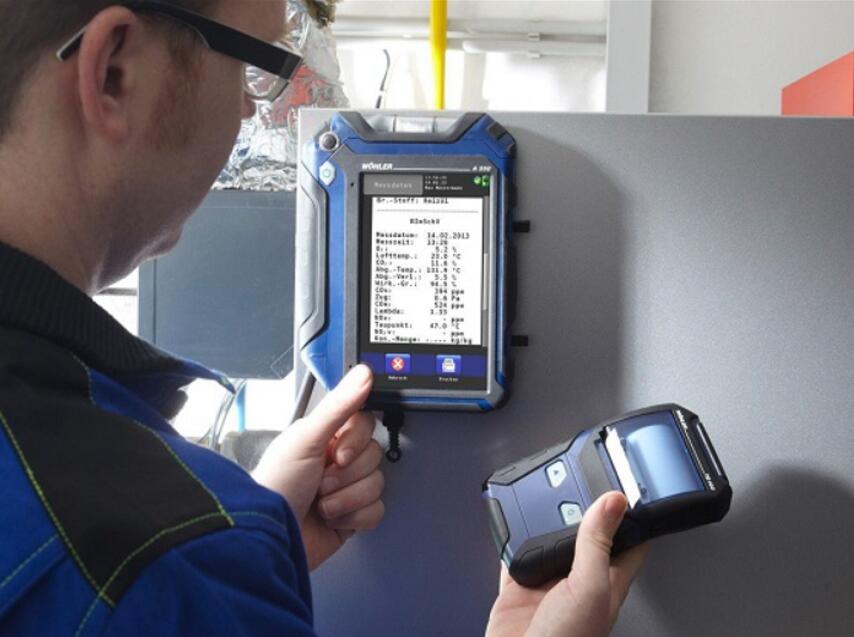
✔ Deciphering Your Needs
The first step is to decipher your needs. If you’re dealing with a process involving 30% CO2, for example, an analyzer capable of handling a greater range than a process with just 5% CO2 is necessary.
Customizing the analyzer to your unique specifications enhances productivity, sidesteps undue costs, and mitigates the danger of inaccurate data. Clarity on which gases are to be detected, anticipated concentration spans, the nature of the sample gas (moist or dry), and the environment of application is critical.
Keep in mind the desired data outputs, interfaces, and foreseeable future demands. Forward-thinking ensures the analyzer’s adaptability, averting premature obsolescence.
✔ Evaluating Gas Composition and Concentration Range
The composition of the gas and its concentration range are key to choosing an analyzer. A multi-gas analyzer is required for intricate gas streams containing several elements, such as a flue gas comprising SO2, NOx, CO, CO2, and O2.
For detecting trace levels, an analyzer with high sensitivity is necessary, capable of detecting gases at parts per billion (ppb) levels.
A comprehension of the gas stream’s concentration range is vital. An analyzer capable of measuring 0-500 ppm wouldn’t be sufficient for a process involving 1000 ppm of a specific gas.
✔ Considering Measurement Precision and Sensitivity
Precision in measurements and sensitivity are critical. An analyzer with a margin of error of +/-1% outperforms one with +/-5%. Sensitivity – the capacity to detect alterations in gas concentration – also merits attention.
In scenarios where minor variations are significant, such as environmental monitoring, heightened sensitivity is key. Analyzers with a lower detection limit (LDL) under 1 ppm are typically employed in these cases.
✔ Accounting for Environmental Conditions at the Application Site
Environmental conditions at the application site can impact the performance of the analyzer. A factory situated in a region with an average temperature of 35°C, for instance, necessitates an analyzer resilient to high temperatures.
Similarly, a corrosive environment calls for an analyzer constructed with materials resistant to corrosion. The existence of dust or moisture might call for supplementary sample conditioning systems to safeguard the analyzer.
✔ Gauging the Analyzer’s Durability and Reliability
The durability and reliability of an analyzer ensure seamless, prolonged operation.
An analyzer engineered for a lifespan of a decade is more beneficial than one designed for half that time, factoring in the cost of replacement and potential operational downtime.
A reliable analyzer also lessens the frequency of maintenance, conserving resources.
✔ Cost Evaluation
The cost isn’t limited to the initial purchase. The overall cost of ownership also includes installation expenses, upkeep costs, and operating expenditures. While energy-efficient analyzers may come with a higher initial price tag, they can lead to long-term savings.
✔ Adherence to Regulatory Standards and Certifications
Compliance with regulatory standards and certifications is a testament to the analyzer’s performance and safety.
Adherence to standards like ISO 9001 and ISO 17025 signals quality and dependability. In the same vein, certifications like ATEX or UL guarantee safe operation in hazardous environments.
It’s important to ascertain that the chosen analyzer complies with all relevant standards and certifications pertinent to your geographical region and sector.
Q&A!
Q: What Makes Continuous Gas Analyzers Unique?
A: Unique attributes of these analyzers include constant surveillance and precise measurements. Their meticulous data collection ensures accurate gas concentration assessments.
Q: Why Is Real-Time Monitoring Essential?
A: Real-time monitoring stands essential for immediate response to potential threats. In-time actions prevent damage, leading to improved safety and efficiency.
Q: How Do Continuous Gas Analyzers Improve Efficiency?
A: By ensuring optimal combustion conditions, these analyzers enhance efficiency. They mitigate wastage and excess fuel consumption, leading to cost and resource savings.
Q: Do Continuous Gas Analyzers Help Reduce Emissions?
A: Indeed, by monitoring and controlling gas emissions, these devices substantially reduce environmental impact. They contribute to sustainable operations and eco-friendly practices.
Q: How Do Continuous Analyzers Support Process Control?
A: These devices play a crucial role in process control. By providing real-time data, they allow for immediate adjustments, ensuring optimal process conditions.
Q: Do Continuous Gas Analyzers Improve Workplace Safety?
A: Certainly, by detecting hazardous gases, these devices significantly increase workplace safety. Immediate alerts enable timely evacuation or mitigation measures, protecting human lives.
Q: Are Continuous Gas Analyzers Cost-Effective?
A: Despite initial investment, their long-term value is undeniable. Reduced fuel consumption, emission control, and efficiency gains offset costs, making them cost-effective.
Q: Are There Any Limitations To Continuous Gas Analyzers?
A: They require regular maintenance for accurate readings. Additionally, they may struggle with complex gas mixtures, presenting challenges in certain scenarios.
Conclusion
Embrace the power of Continuous Gas Analyzers to optimize processes, ensure safety, and comply with regulations. Real-time monitoring isn’t just a convenience; it’s a game-changer.
Explore more about these indispensable tools at ESEGas, your partner in efficient gas monitoring solutions.
Make an informed decision, choose the right gas analyzer, and propel your operation to new heights of productivity and safety. Don’t just adapt to change, be the change.





